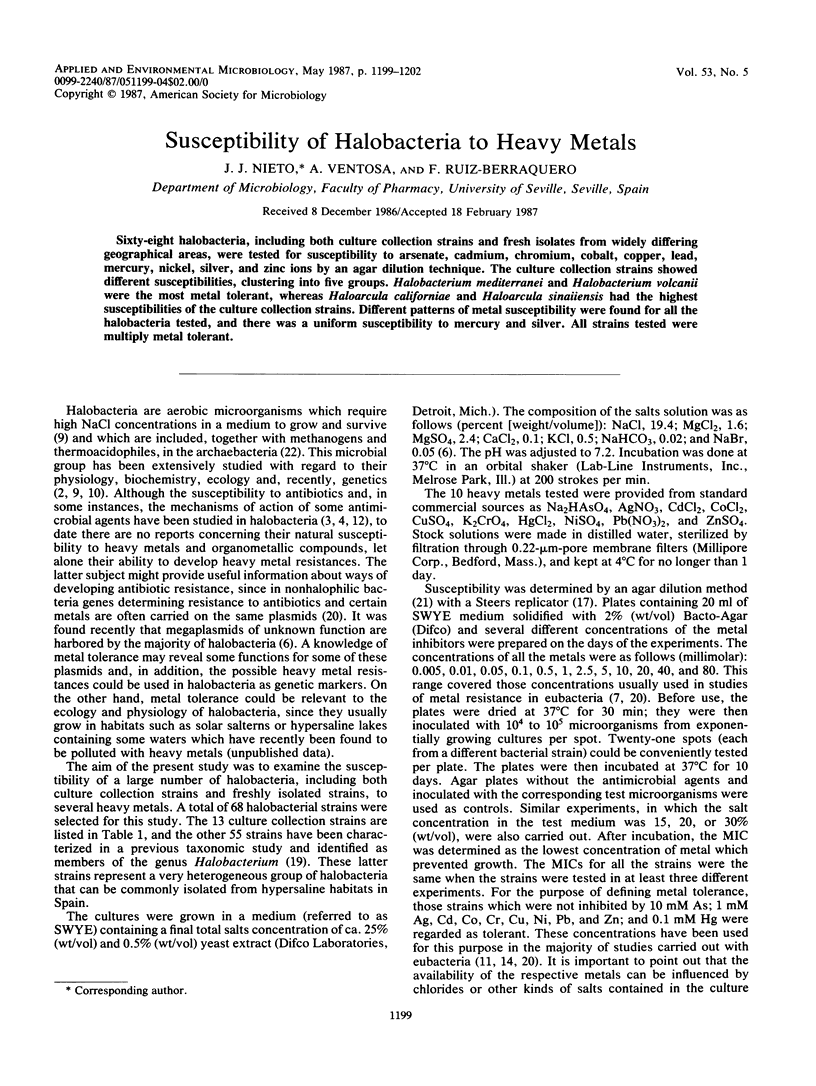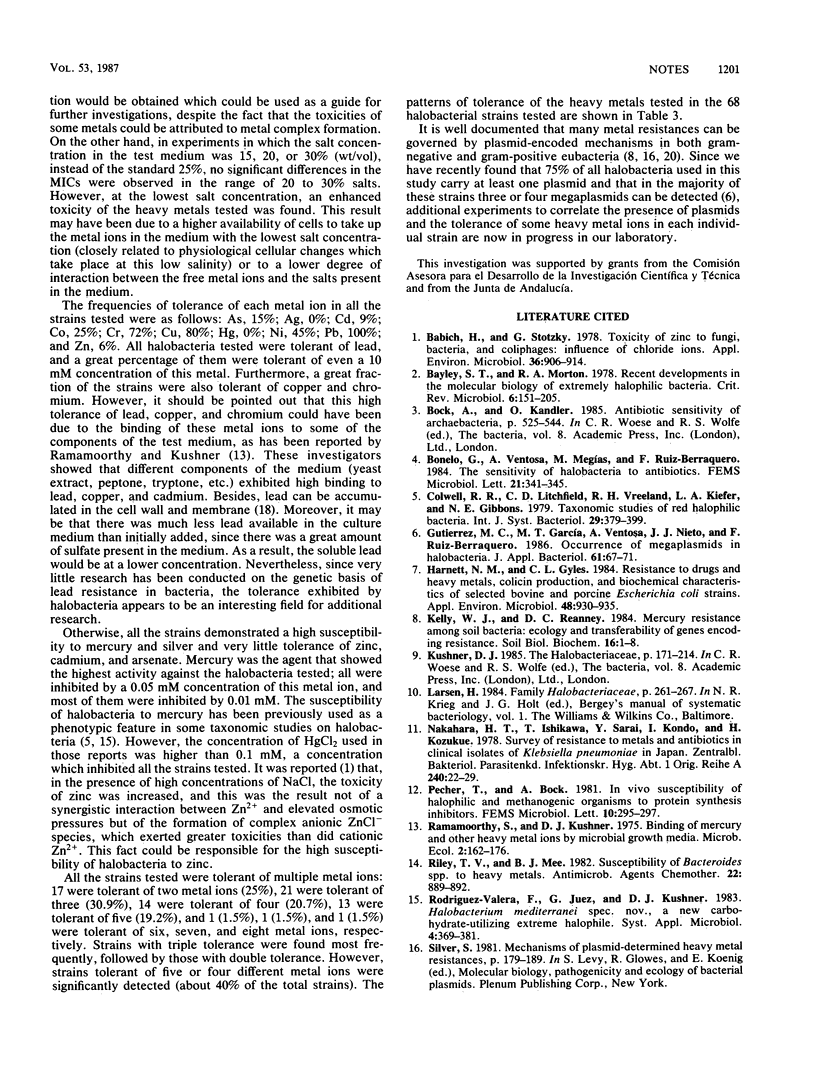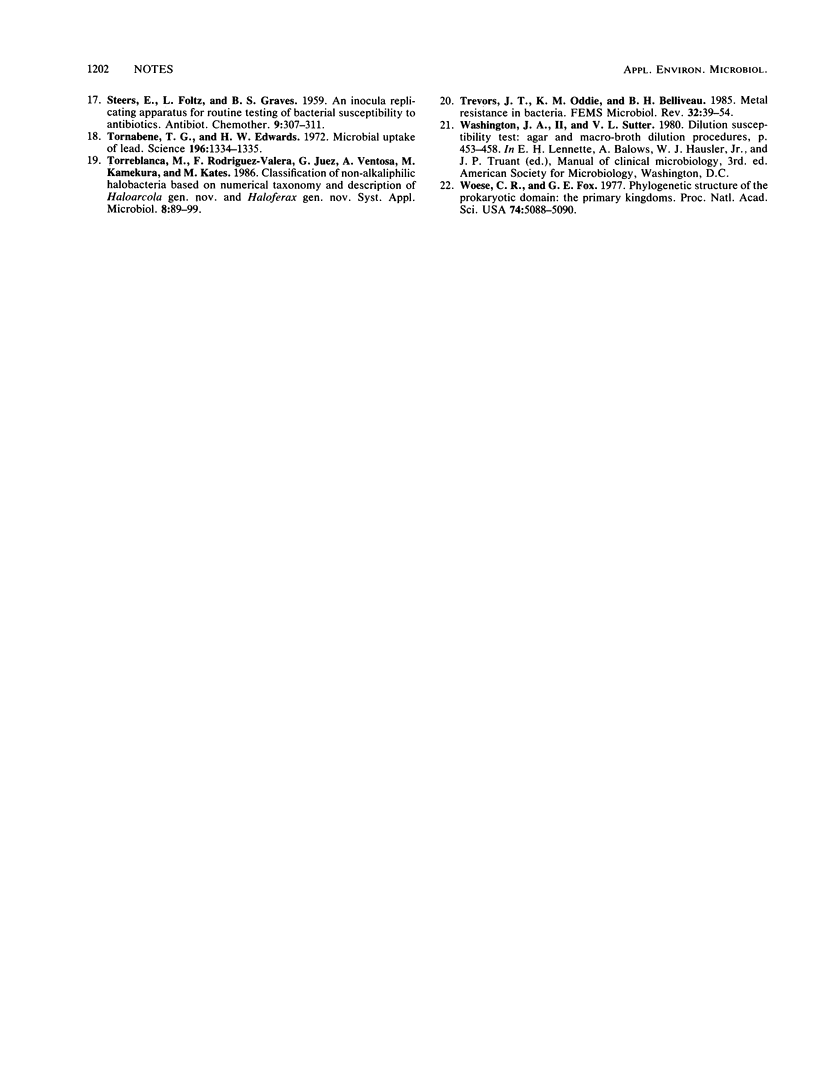Abstract
Sixty-eight halobacteria, including both culture collection strains and fresh isolates from widely differing geographical areas, were tested for susceptibility to arsenate, cadmium, chromium, cobalt, copper, lead, mercury, nickel, silver, and zinc ions by an agar dilution technique. The culture collection strains showed different susceptibilities, clustering into five groups. Halobacterium mediterranei and Halobacterium volcanii were the most metal tolerant, whereas Haloarcula californiae and Haloarcula sinaiiensis had the highest susceptibilities of the culture collection strains. Different patterns of metal susceptibility were found for all the halobacteria tested, and there was a uniform susceptibility to mercury and silver. All strains tested were multiply metal tolerant.
Full text
PDF



Selected References
These references are in PubMed. This may not be the complete list of references from this article.
- Babich H., Stotzky G. Toxicity of zinc to fungi, bacteria, and coliphages: influence of chloride ions. Appl Environ Microbiol. 1978 Dec;36(6):906–914. doi: 10.1128/aem.36.6.906-914.1978. [DOI] [PMC free article] [PubMed] [Google Scholar]
- Bayley S. T., Morton R. A. Recent developments in the molecular biology of extremely halophilic bacteria. CRC Crit Rev Microbiol. 1978;6(2):151–205. doi: 10.3109/10408417809090622. [DOI] [PubMed] [Google Scholar]
- Harnett N. M., Gyles C. L. Resistance to drugs and heavy metals, colicin production, and biochemical characteristics of selected bovine and porcine Escherichia coli strains. Appl Environ Microbiol. 1984 Nov;48(5):930–935. doi: 10.1128/aem.48.5.930-935.1984. [DOI] [PMC free article] [PubMed] [Google Scholar]
- Nakahara H., Ishikawa T., Sarai Y., Kondo I., Kozukue H. Survey of resistance to metals and antibiotics in clinical isolates of Klebsiella pneumoniae in Japan. Zentralbl Bakteriol Orig A. 1978 Jan;240(1):22–29. [PubMed] [Google Scholar]
- Riley T. V., Mee B. J. Susceptibility of Bacteroides spp. to heavy metals. Antimicrob Agents Chemother. 1982 Nov;22(5):889–892. doi: 10.1128/aac.22.5.889. [DOI] [PMC free article] [PubMed] [Google Scholar]
- Tornabene T. G., Edwards H. W. Microbial uptake of lead. Science. 1972 Jun 23;176(4041):1334–1335. doi: 10.1126/science.176.4041.1334. [DOI] [PubMed] [Google Scholar]
- Woese C. R., Fox G. E. Phylogenetic structure of the prokaryotic domain: the primary kingdoms. Proc Natl Acad Sci U S A. 1977 Nov;74(11):5088–5090. doi: 10.1073/pnas.74.11.5088. [DOI] [PMC free article] [PubMed] [Google Scholar]


